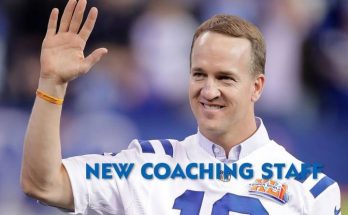Caitlin Clark, one of college basketball’s brightest stars and the centerpiece of her team’s offense, has suffered a significant injury that will sideline her for a minimum of two weeks. The standout guard has been diagnosed with a left quadriceps strain, a setback that not only impacts her personally but also sends ripples throughout her team and the broader basketball community. As fans and analysts absorb this news, questions arise about the severity of the injury, what it means for her season, and how her team will adjust during her absence.
The news of Clark’s injury came as a blow to many who have come to expect electrifying performances from the dynamic guard. Known for her scoring ability, court vision, and leadership, Clark has been instrumental in her team’s success this season. Her style of play combines a fearless attacking mentality with sharp shooting and the ability to create opportunities for teammates. She has become a fan favorite, a must-watch athlete who regularly delivers highlight-reel moments that captivate audiences nationwide.
A left quadriceps strain, the official diagnosis, refers to a tear or overstretching of the muscles on the front of the thigh, responsible for extending the knee and aiding in powerful leg movements. For a basketball player like Clark, whose game relies heavily on speed, agility, and explosive drives to the basket, such an injury can be particularly challenging. Recovery involves rest, physical therapy, and gradual return to activity, with a careful balance to avoid further damage. The two-week minimum timeline reflects a cautious approach, aiming to allow healing while preventing premature return that could exacerbate the strain.
The timing of this injury could not be more critical. With the season in full swing, every game counts as the team jostles for positioning and momentum. Clark’s absence means her teammates will need to step up in a new way, filling the void left by a player who often carries a significant offensive load. Coaches face the challenge of adjusting game plans and rotations, experimenting with different lineups to maintain competitiveness while Clark is on the sidelines.
For fans, the news is a bitter pill. Watching a player as electrifying as Clark sidelined is difficult, especially given her prominence in the sport and the high expectations she has set. Social media platforms have been buzzing with well-wishes, expressions of concern, and speculation about the impact on upcoming games. Many supporters express confidence in her resilience and determination to return stronger, recognizing that injuries are an unfortunate part of sports but also opportunities for athletes to show their grit and mental toughness.
Clark’s history provides some reassurance. Throughout her career, she has demonstrated an ability to overcome adversity, whether it be through tough competition or physical challenges. Her work ethic, commitment to rehabilitation, and access to top-tier medical and training staff bode well for her recovery process. Typically, muscle strains of this nature, when managed properly, allow for a full return to form without long-term effects. However, the key lies in patience and adherence to a carefully structured rehab program.
From a team perspective, the coaching staff will likely emphasize a collective effort approach during this period. Without their star guard, other players will have the opportunity to develop their roles, gain confidence, and showcase their abilities. This stretch could serve as a proving ground for emerging talent and provide valuable experience that will benefit the team in the long term. While it is undoubtedly a setback, it can also be framed as a moment of growth and resilience.
Strategically, the team may need to adjust both offensive and defensive schemes. Clark’s playmaking and scoring create spacing and opportunities that opponents have to respect, often dictating defensive attention and allowing teammates to capitalize on open looks. Without her, the offense might lean more heavily on other scorers or shift towards a more balanced attack, spreading the responsibility among multiple players. Defensively, the team may have to compensate for changes in their lineup, ensuring that rotations remain tight and communication is heightened.
The quadriceps muscle group plays an essential role in running, jumping, and quick changes of direction, all fundamental to basketball performance. A strain in this area can limit a player’s ability to accelerate explosively and maintain stamina throughout a game. Thus, during recovery, it is crucial for Clark to focus on regaining strength, flexibility, and neuromuscular control. This process usually includes a combination of rest, ice, compression, and elevation in the initial stages, followed by gentle stretching and progressive strengthening exercises under professional supervision.
Medical staff will closely monitor Clark’s progress, employing tools such as imaging studies and functional tests to assess healing. Return-to-play decisions will be carefully made based on objective criteria and the athlete’s subjective readiness. The risk of re-injury is a significant concern, as rushing back prematurely can lead to chronic problems or more severe damage. Hence, the two-week minimum is likely a conservative estimate that may be extended depending on how Clark responds to treatment.
The psychological impact of injuries on elite athletes should not be overlooked. For someone like Clark, who thrives on competition and the rhythm of playing, being sidelined can be frustrating and challenging. Maintaining a positive mindset, staying engaged with the team, and focusing on recovery goals are critical components of the healing journey. Support from teammates, coaches, family, and fans plays an invaluable role in keeping morale high during this period.
Looking ahead, the team’s schedule will be a key factor in determining how much Clark’s absence affects their trajectory. If the upcoming games are against particularly tough opponents, the challenge to maintain winning momentum will be even greater. Conversely, if there are opportunities to build confidence against less formidable competition, it could help the team sustain morale and cohesion. Regardless, every game will carry heightened stakes as the team navigates this temporary but significant hurdle.
For Clark, this setback is just another chapter in what has been an impressive and rapidly rising career. Already recognized nationally for her talent and impact, she has shown maturity beyond her years in handling pressure and expectations. Injuries like this are part of the journey for all athletes, and many have used such moments as catalysts for renewed focus and determination. Clark’s future remains bright, and fans will undoubtedly be eager to welcome her back to the court as soon as she is fully ready.
In the broader landscape of college basketball, the news serves as a reminder of the physical toll the sport can take on even the most elite athletes. It also highlights the importance of comprehensive medical care, training, and recovery strategies employed by teams to protect their players’ health and longevity. The balance between competitive drive and physical well-being is delicate, and situations like Clark’s reinforce the need for patience and caution in managing injuries.
As the days progress and Clark embarks on her rehabilitation, updates will likely come from the team’s medical staff and coaching personnel. Fans and media will be watching closely, hoping for positive signs and milestones that indicate a safe and timely return. Meanwhile, the team will rally around one another, demonstrating resilience and adaptability in the face of adversity.
Ultimately, Caitlin Clark’s left quadriceps strain is a setback, but it is far from a defining moment. It is a reminder that even the most talented and conditioned athletes are human and vulnerable to injury. How she and her team respond will speak volumes about their character and determination. With proper care, rest, and rehabilitation, Clark is expected to return to the court ready to pick up where she left off, continuing to thrill fans and lead her team with the same passion and skill that has made her a standout in the college basketball world.



